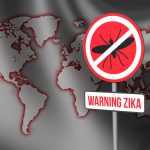About Fertility
Guidance for Providers Caring for Women and Men Of Reproductive Age with Possible Zika Virus Exposure

In September 2016, the American Society of Reproductive Medicine (ASRM) issued new guidance for providers caring for women and men of reproductive age with possible Zika Virus exposure. The guidance was for providers that addressed the care of non-pregnant patients desiring pregnancy. This document, now updated, is based on new information, including the recent MMWR Vol. 66, July 24, 2017 issued by the CDC “Update: Interim Guidance for Health Care Providers Caring for Pregnant Women with Possible Zika Virus Exposure – United States.” In particular, this revised ASRM document addresses those individuals and couples undergoing assisted reproductive technologies (ART) who are potentially imminently pregnant because of the high overall success rate of this infertility treatment, compared to other treatments and natural conception. These couples therefore should be considered to be in the periconceptional period and for them, this can be defined prospectively, whereas for those who conceive naturally this period is defined retrospectively.
Unlike patients attempting pregnancy on their own, achieving pregnancy by an intervention such as ART is voluntary and the active role of providers falls under the guiding principle of medicine of “do no harm.” This document was developed to specifically address couples who may be needing ART and/or the use of gametes and embryos.
Women who have Zika virus disease should wait AT LEAST 8 weeks after symptoms onset to attempt conception.
Men who have Zika virus disease should wait AT LEAST 6 months after symptoms onset to attempt conception.
If you have any questions, please contact us!


